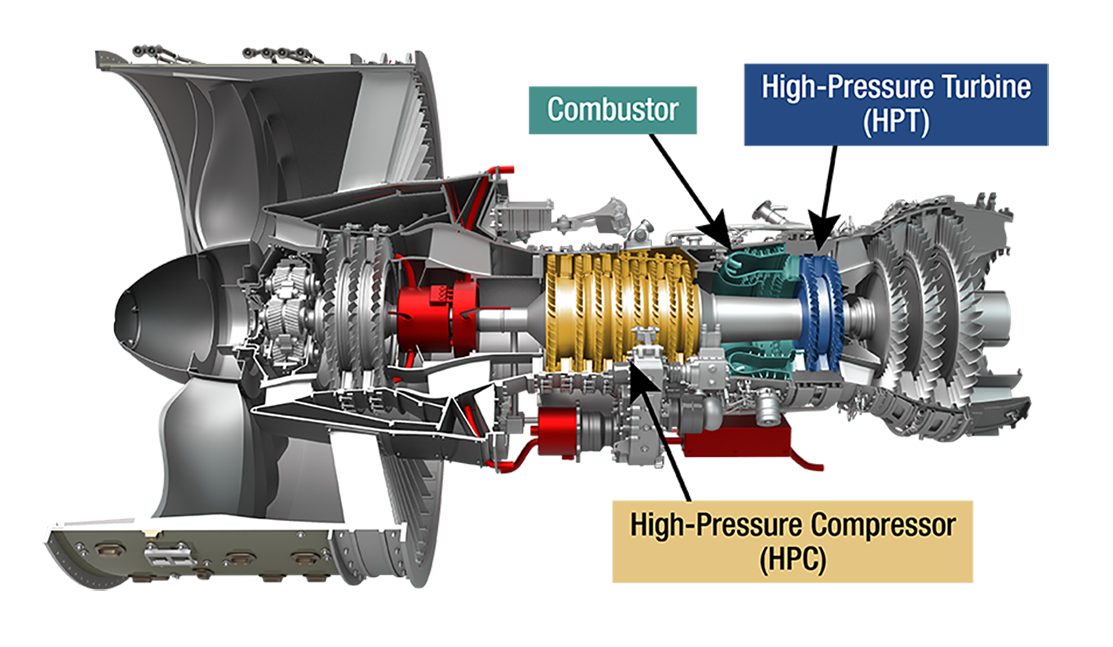NASA, together with industry, will soon begin developing a new jet engine concept for next-generation super-efficient aircraft and will officially move into the next phase of the project. As part of NASA’s goal to make the aerospace industry more sustainable, the agency is developing a small core for a hybrid electric turbofan jet engine that could reduce fuel consumption by 10% compared to existing engines.
The core of a jet engine is where compressed air combines with fuel and is ignited to produce power. Reducing this core can increase fuel efficiency and reduce carbon emissions.
The goal of the project, called Hybrid Thermally Efficient Core (HyTEC), is to demonstrate this compact core and prepare the technology for implementation in next-generation aircraft engines in the 2030s. HyTEC is a key component of NASA’s National Partnership for Sustainable Flight.
HyTEC consists of two phases to achieve this ambitious goal:
- Phase 1, which is being completed, focused on the selection of component technologies to be used in the base demonstrator.
- Phase 2, which begins now, will allow researchers to design, build and test a compact core in collaboration with GE Aerospace.
“Phase 1 of HyTEC is coming to an end and we are accelerating for Phase 2,” said Anthony Nero, who heads HyTEC at NASA’s Glenn Research Center in Cleveland. “This phase will culminate in a major demonstration test that will validate the technology so it can be transferred to industry.”
Before the researchers could begin the process of designing and manufacturing the core, they needed to work on innovative new materials to be used in the engine. After three years of extremely rapid progress, HyTEC researchers have found a solution.
“We were laser focused from day one. We started the project with specific technical goals and success metrics, and so far we haven’t had to change course from any of them,” said Nerone.
In order to reduce the size of the core while maintaining the same thrust force, the heat and pressure must be increased compared to the standard jet engines used today. This means that the core of the engine must be made of stronger materials that can withstand high temperatures.
In addition to materials research, the project also explored advanced aerodynamics and other important technical elements.
A cross-section of a typical turbofan jet engine highlights the main parts of HyTEC that will work for propulsion. These include the high-pressure compressor, combustion chamber, high-pressure turbine and power generation components.NASA
Phase 2 builds on Phase 1 to create a compact ground test core that validates HyTEC’s capabilities.
“Phase 2 is very challenging. This is not just a simple demonstration,” said Nerone. “What we have created has never been done before and involves many different technologies coming together to create a new type of engine.”
The technologies tested in the HyTEC program will help enable much higher bypass rates, hybridization and compatibility with sustainable aviation fuels.
Bypass ratio defines the ratio of the amount of air flowing through the engine core to the amount of air circulating around and bypassing the core.
The HyTEC concept will use less fuel and reduce carbon emissions by reducing the size of the core while increasing the size of the turbofan it feeds while maintaining the same thrust.
“HyTEC is an integral part of our RISE program,” said Kathleen Mondino, who helps manage RISE technology at GE Aerospace. “GE Aerospace and NASA have a long history of working together to develop cutting-edge aerospace technologies. “The HyTEC program builds on these relationships to help shape the future of more sustainable flight.”
Another piece of the puzzle is hybridization. HyTEC’s hybrid electric capabilities also mean that the core will be powered by electricity to further reduce fuel consumption and carbon emissions.
“This engine will be the first mild hybrid electric engine and hopefully the first production hybrid electric engine for aircraft,” Nerone said.














